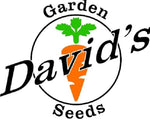Beneficial Garden Insects

Did you know there are beneficial garden insects that will help you with your gardening? I do not like bugs but my husband is always telling me not to kill them outside unless I know what I am doing.
"A dead bug is a good bug," is a quote from Starship Troopers. Maybe in the movie they are but there are many beneficial bugs that are good for the garden.
So what bugs are good for the garden? How do they help? What do they look like?
Beneficial Garden Insects
First, and probably the most recognizable is the Ladybug. As children, we are taught the nursery rhyme "Ladybug, Ladybug, fly away home." The familiar red-orange bugs with black spots seem to be everywhere. Adult ladybugs and their offspring, called larvae, eat the leaf-destroying bugs known as aphids.
 Ladybugs are good for your garden. They are beneficial garden insects.
Ladybugs are good for your garden. They are beneficial garden insects.
Ground beetles are known for being shiny and are either brown or bluish black. They eat snails and slugs so you want them in your garden. They also partake of root maggots, cutworms, and the larvae of the Colorado potato beetle.
There are many types of ground beetles. Some are good and some are bad. Some are both. I guess the rule of thumb is if it is eating your plants then it is a bad beetle.
Rove beetles enjoy killing mites and snails. We used to get a lot of snails in our backyard.
Here on the farm, I have seed about three different type of beetles. So far they have left my plants alone. We have a ton of grasshoppers. So far they have left my plants alone. I am sure though, soon, I am going to have to spray for them. The problem is killing them means killing the good guys as well.

Ground Bettle
Wasps like to eat the eggs of plant-harming insects. Most of us can recognize wasps and know to move out of their way so we don't get stung. We have so many wasps in our backyard during the spring and summer that I am sometimes fearful to go out there. I always want to spray them, but my husband will not let me as they are so good for our plants.
Spiders are creepy beneficial garden insects. They eat other insects, many of which like to destroy your plants so you need them in your garden. If you happen to see poisonous spiders, leave them alone. The will usually leave you alone.

I hate houseflies. I am almost convinced that they wait right outside our backdoor and fly in as soon as it opens. Houseflies are not good for your garden but a fly who looks almost like them is good for the garden, the Tachinid fly. They love to kill squash bugs, sowbugs, cabbage loopers, tent caterpillars, gypsy moths, cutworms, armyworms, and Japanese beetles. There are many types of these flies.

Spined soldier bug, scientifically known as “Podisus maculiventris” is a common insect species found in several regions of North America. They are commonly beneficial for their predator nature over the beetle larvae like the Mexican bean beetle, Colorado potato beetle, and especially the gypsy moth caterpillars which are active crop destroyers.

Pirate bugs or flower bugs, also known as Anthocoridae, eat small insects and their eggs by making a hole in their prey, putting their saliva into them and then drinking everything inside the prey. Nasty! But they do save your garden plants from spider mites, thrips, and corn earworms.
Other good predatory bugs include the ambush bug and the big-eyed bug. They also eat caterpillars and insect larvae that will destroy your plant leaves.

Hover flies, also known as syrphid flies or flower flies are also good for your garden. They actually pollinate both raspberries and strawberries. We grow lots of strawberries each year so we are happy to have hover flies in our garden. They look like small bees with black and yellow stripes so you may think they are bees. Hoverflies feed on caterpillars and leafhoppers. Their larvae eat aphids so you want to welcome them into your garden. Aphids will destroy your plant leaves.

Lacewings are also beneficial garden insects. They are green with delicate-looking wings with holes in them, resembling lace. Their larvae look scary and ugly. They are brown with small bits of yellow on them and they have legs. When you see them, do not destroy them because the larvae eat thrips, aphids, moth eggs, caterpillars, mites, and scales.







Leave a comment